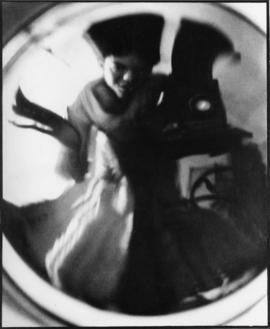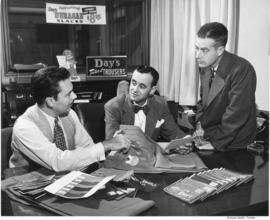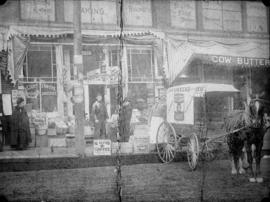The Gamle Vikingers Forbund, or Ancient Order of Vikings, Ship No. 1 was created in 1892 as an extension of The Haabet (Hope) Literary Society, which had been active in the Tacoma community since 1890, providing an “English school for newcomers.” The organization, whose motto was “Brotherhood, Protection and Charity” included the founding members: Chas. Evans, Engvald Haug, Chas. Woog, Severin Haug, Ole Moen, Dirk Blaauw, G.O. Sande, C. Knutson, N.L. Ormsrud, Haakon Bader and Tom Knudson.
The society first appeared in newspapers in 1895, holding their annual celebration of Norway’s May 17th Constitution Day, which would frequently be attended by Tacoma political figures, including Mayor George P. Wright and accompaniment from the Walhalla Military Band. The organization also held annual Christmas celebrations which featured both Christian and Norse ceremonies, including a “representation of the ancient offering of sacrifice to Odin and Thor.”
In 1905, the society reserved a special train for members to visit Portland’s Lewis and Clark exposition together. In 1908, the 220 member organization purchased three acres in the north side of Fox Island at the entrance of Hales Passage for a lodge and picnic grounds for $50,000. The Ancient Order of Vikings eventually sold this property in order to invest in the Normanna Hall building at 1502 Martin Luther Way.
In 1941, the society donated their “Viking Library” to the Pacific Lutheran University, which included items which dated back to the Haabet Literary Society. Although the organization seems to have waned and revived on multiple occasions, a typed note within Log Book Six written by historian Hjalmer Jensen describes the final meeting of the order taking place on February 2nd, 1955.


